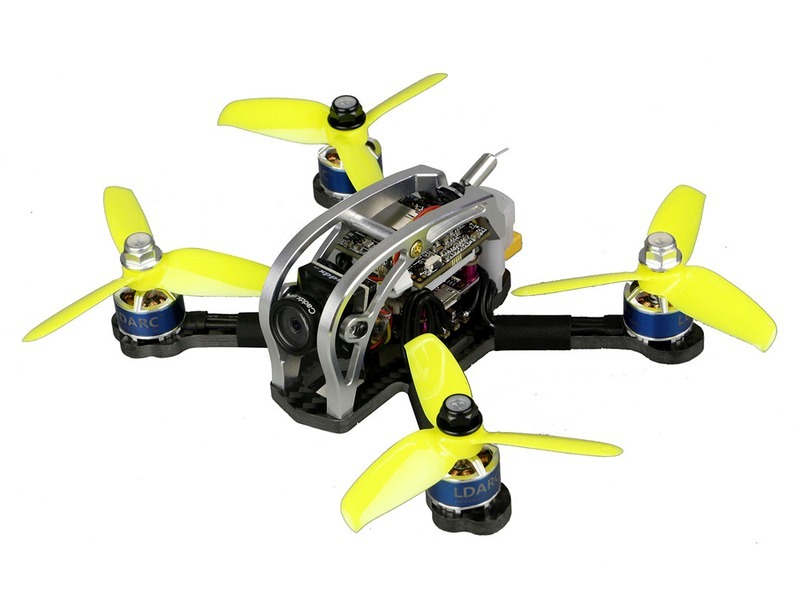Which is the most powerful motor for RC drone?

The most powerful motor for an RC drone is the brushless motor. Brushless motors are the most efficient and powerful motors available for RC drones, providing more power and torque than brushed motors. Brushless motors are also more reliable and require less maintenance than brushed motors.
Brushless motors are powered by an electronic controller, which is connected to the motor and the battery. The controller is responsible for controlling the speed and direction of the motor. The controller is also responsible for providing the necessary power to the motor, which is determined by the size of the motor and the voltage of the battery.
Brushless motors are typically more expensive than brushed motors, but they are also more efficient and powerful. Brushless motors are also more reliable and require less maintenance than brushed motors. Brushless motors are also quieter than brushed motors, which makes them ideal for use in RC drones.
Brushless motors are available in a variety of sizes and power ratings. The size of the motor will determine the amount of power it can provide, and the voltage of the battery will determine the speed of the motor. The higher the voltage of the battery, the faster the motor will be able to spin.
When selecting a brushless motor for an RC drone, it is important to consider the size of the drone and the type of terrain it will be used on. The size of the motor should be appropriate for the size of the drone, and the type of terrain should be taken into consideration when selecting the motor.
Brushless motors are also available in different configurations, such as in-runner and out-runner. In-runner motors are more efficient and powerful than out-runner motors, but they are also more expensive. Out-runner motors are less efficient and powerful than in-runner motors, but they are also less expensive.
In conclusion, the most powerful motor for an RC drone is the brushless motor. Brushless motors are more efficient and powerful than brushed motors, and they are also more reliable and require less maintenance. Brushless motors are available in a variety of sizes and power ratings, and they can be configured in either in-runner or out-runner configurations. When selecting a brushless motor for an RC drone, it is important to consider the size of the drone and the type of terrain it will be used on.
Comments / Question
2. Use a propeller guard to protect the motor and propellers from damage.
3. Use a LiPo battery with the correct voltage and capacity for the motor.
4. Use a motor controller with the correct current rating for the motor.
5. Ensure that the motor is properly cooled to prevent overheating.
6. Use a voltage regulator to ensure the motor does not draw too much current.
7. Use a failsafe system to ensure the motor will shut off in the event of a power failure.
8. Ensure that the motor is properly balanced to prevent vibration.
9. Use a timer to limit the amount of time the motor is running.
10. Wear protective gear such as goggles and gloves when working with powerful motors.
2. Power: The motor should provide enough thrust to lift the drone and its payload.
3. Efficiency: The motor should be as efficient as possible to maximize battery life.
4. Weight: The motor should be as light as possible to reduce the overall weight of the drone.
5. Cost: The motor should be affordable and fit within the budget of the drone.
6. Durability: The motor should be able to withstand the rigors of flying and remain reliable over time.
1. Brushless motors are more efficient than brushed motors, providing more power and torque with less energy.
2. Brushless motors are more reliable and require less maintenance than brushed motors.
3. Brushless motors are quieter than brushed motors, making them ideal for RC drones.
Disadvantages of Brushless Motors:
1. Brushless motors are more expensive than brushed motors.
2. Brushless motors require more complex electronics and wiring.
Advantages of Brushed Motors:
1. Brushed motors are cheaper than brushless motors.
2. Brushed motors are simpler and require less wiring and electronics.
3. Brushed motors are more durable and can withstand more abuse than brushless motors.
Disadvantages of Brushed Motors:
1. Brushed motors are less efficient than brushless motors, providing less power and torque with more energy.
2. Brushed motors are noisier than brushless motors, making them less ideal for RC drones.
3. Brushed motors require more maintenance and are more prone to failure than brushless motors.

